The nose and chin are two key features that greatly affect facial aesthetics, helping to create harmony and balance, especially in profile view. If both have imperfections such as a flat nose, wide nasal tip, low nasal bridge, a crooked nose, a receding chin, short chin, or lack of projection, chin augmentation and rhinoplasty become top “rescue” solutions. But can these procedures be performed simultaneously? This is a common concern, and this article will provide a detailed answer for you.
Learn about rhinoplasty and chin augmentation
Before diving into whether rhinoplasty and chin augmentation can be performed together, let’s take a closer look at each procedure based on the details below.
What is rhinoplasty?
Rhinoplasty is a cosmetic surgical procedure designed to change the shape, size, and anatomical structure of the nose, correct nasal imperfections, and create a nose that is high, straight, slender, and harmonious with the overall facial features.
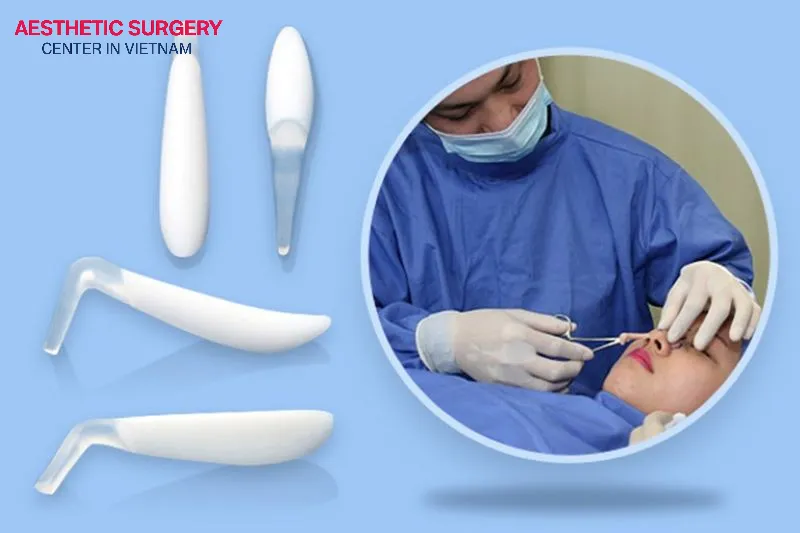
Rhinoplasty is commonly applied in cases where the nose has the following issues:
- Flat or low nose, wide nostrils, no nasal bridge.
- High nose but with bumps, crooked, or misaligned.
- Nose damaged by trauma.
- Congenital nasal deformities.
- Deviated septum causing breathing difficulties or congestion.
Today, modern rhinoplasty is divided into main types based on the level of intervention and the materials used, including:
- Traditional rhinoplasty: This method minimally interferes with the nasal structure, focusing mainly on the nasal bridge, and usually uses synthetic cartilage (Silicone, Surgiform) to elevate the bridge.
- Cartilage-wrapped rhinoplasty: This technique is often used to raise the nasal bridge while protecting the nasal tip. It uses synthetic cartilage to shape the bridge and autologous cartilage to cover the tip.
- Structural rhinoplasty: This method reconstructs the entire nasal structure, including the nasal septum, bridge, and tip. The main materials used are autologous cartilage for the septum, rib cartilage, and synthetic cartilage for the bridge.
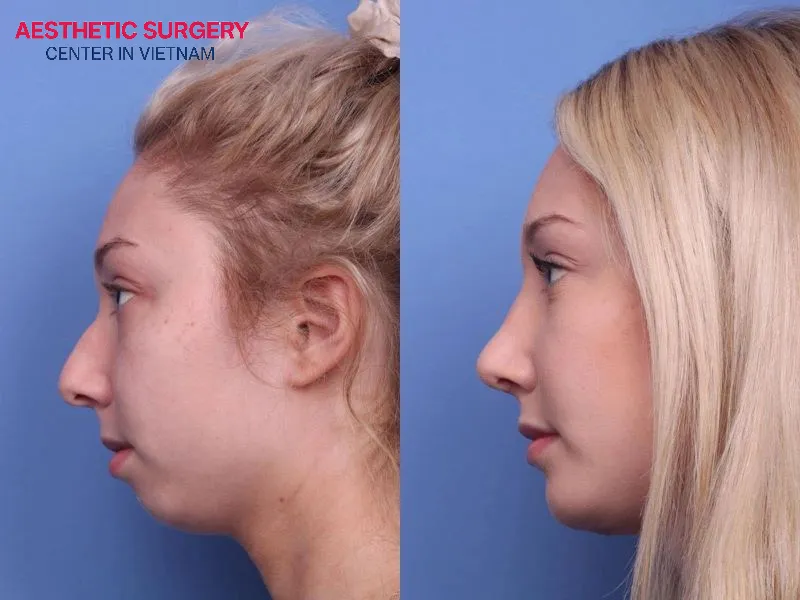
What is chin augmentation?
Chin augmentation, also called genioplasty, is a cosmetic surgical procedure aimed at improving the shape, size, and projection of the chin. It helps correct existing chin imperfections and create a V-line or O-line chin, making the face more balanced, harmonious, and refined.
This procedure commonly addresses chin issues such as:
- Receding, short, or under-projected chin.
- Chin that is disproportionate to other facial features.
- Overly square chin.
Today, there are several commonly used chin augmentation methods, including:
- Chin augmentation with synthetic implants: In this method, the surgeon makes a small incision inside the mouth or under the chin to create a pocket and insert the implant.
- Sliding genioplasty: This technique is usually applied for severely receding chins or when significant adjustment is needed. The surgeon cuts a section of the chin bone in the middle, then moves it forward or downward and secures it with plates and screws to create the desired chin shape. Using the patient’s own bone ensures high compatibility.
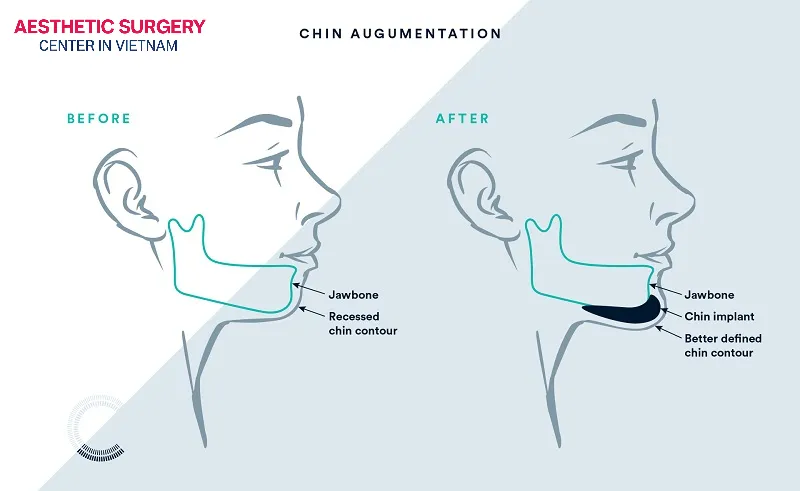
Can I get a chin implant and rhinoplasty at the same time?
According to experts and cosmetic surgeons, chin augmentation and rhinoplasty can be performed at the same time. This approach corrects imperfections in both the nose and chin, saves time, achieves overall facial balance, and creates a more refined, V-line appearance.
However, to safely undergo combined chin and nose surgery and achieve the best results, it is essential to choose a reputable clinic with experienced, highly skilled surgeons who perform the procedure following standard medical safety protocols.

The benefits of combining rhinoplasty and chin Augmentation
The combination of rhinoplasty and chin augmentation is highly regarded by cosmetic experts for providing comprehensive and harmonious facial enhancement. Below are the main benefits of combining these two procedures:
- Balanced and harmonious facial appearance: The nose and chin are two key anchor points of the face, determining the balance of the profile view (the “perfect” side angle). When combined, surgeons can easily adjust the ideal proportion between Nose – Lips – Chin (E-Line) to create complete harmony.
- Simultaneous correction of multiple imperfections: For those with issues in both the nose and chin, combining rhinoplasty and chin augmentation addresses all these imperfections at once. This results in an elevated, refined nose paired with a longer, slender chin, giving the face a more balanced, harmonious, and sharp appearance.
- Saves time, effort, and recovery: With combined nose and chin surgery, patients only undergo anesthesia once, reducing stress and anxiety compared to having two separate surgeries.
- Cost optimization: Many cosmetic clinics now offer package deals for combined rhinoplasty and chin augmentation at a more affordable price than having the two procedures separately. As a result, patients can save a significant amount of money by opting for the combined approach.
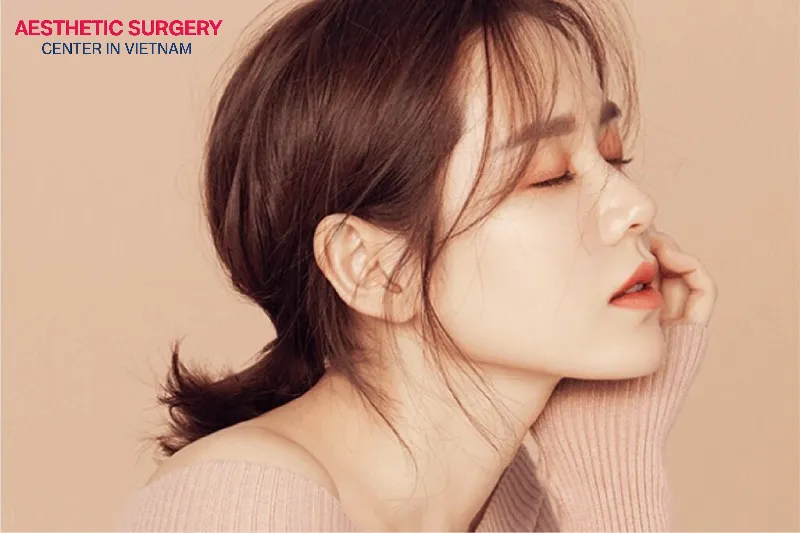
Who is rhinoplasty and chin augmentation for?
Although combining rhinoplasty and chin augmentation offers many positive benefits, this method is only suitable for the following individuals:
- People aged 18 and above, ensuring fully developed facial bone structure, good health, and stable mental condition.
- Individuals with simultaneous nose and chin imperfections, including: low or flat nose, crooked nose, bumpy bridge, wide tip, flared nostrils, short or receding chin, or chin size disproportionate to the face.
- Individuals with congenital deformities or trauma to the nose and chin requiring correction for both shape and function.
- People with an unbalanced or disproportionate face due to mismatch between the mid-nose and lower chin area.
- In summary, the combined rhinoplasty and chin augmentation method is ideal for people with both nose and chin imperfections who wish to achieve overall facial enhancement with harmonious results while saving time.
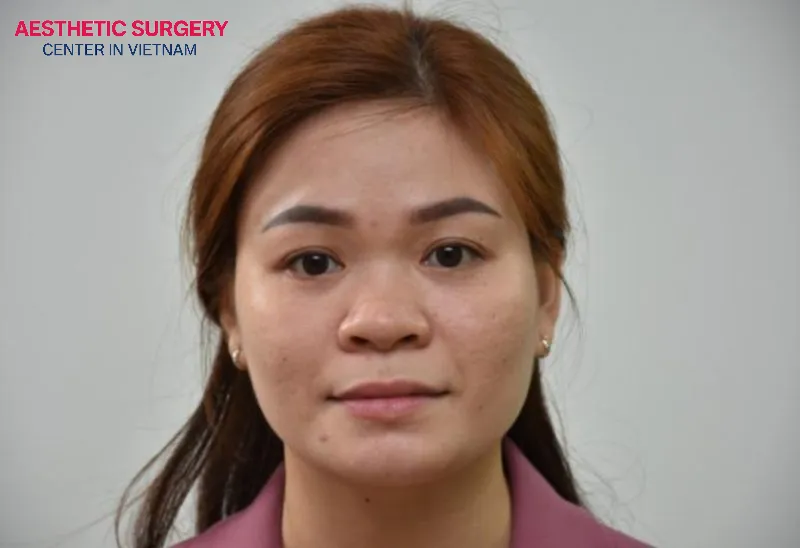
Nose job and chin Implant procedure
The combined rhinoplasty and chin augmentation procedure is carried out following standard medical protocols to ensure safety and achieve optimal aesthetic results. The basic steps are as follows:
Step 1: Consultation and general examination
A cosmetic specialist examines and evaluates the imperfections of the nose and chin, discussing the patient’s expectations. Based on this, the surgeon determines the procedure (e.g., structural rhinoplasty, synthetic chin implant, sliding genioplasty), selects materials, and designs the nose and chin shapes suitable for overall facial harmony.
Step 2: Medical tests
The patient undergoes blood tests, cardiovascular checks, blood pressure measurement, coagulation tests, and other necessary examinations as required by the Ministry of Health. This ensures the patient’s overall health is suitable for safely undergoing surgery.
Step 3: Measurement and design
The surgeon carefully measures and marks the areas to be treated on the nose and chin. A detailed surgical plan is drafted to ensure balanced and harmonious facial proportions.
Step 4: Anesthesia
The anesthesiologist administers local or general anesthesia, depending on the complexity of the procedure and the surgeon’s recommendation.
Step 5: Surgery
- Rhinoplasty: The surgeon makes an incision to create a pocket, then harvests cartilage from the ear, septum, or rib to shape the nasal tip and septum. The implant is placed to elevate the nasal bridge, the tip is refined, nostrils are reduced, and the incision is closed with aesthetic sutures.
- Chin augmentation: The surgeon creates an incision inside the mouth or under the chin, dissects a pocket in the chin bone, inserts and secures the implant, then closes the incision.
Step 6: Completion and postoperative care instructions
The nose is stabilized with a medical splint, and the chin is bandaged to maintain shape and reduce swelling. The patient is monitored in the recovery room, vital signs checked, and initial care provided (cold compresses, pain medication). Once stable and approved by the surgeon, the patient can be discharged and continue care at home.

How much does rhinoplasty and chin augmentation cost?
The cost of rhinoplasty and chin augmentation in Vietnam varies widely depending on several factors, especially the chosen procedure, implant materials, and the reputation of the clinic. Based on market surveys at reputable clinics and cosmetic hospitals in Vietnam, the combined cost typically ranges from 40,000,000 VND to 80,000,000 VND (depending on the type of structural rhinoplasty and chin implant materials). In more complex cases, costs can reach 100,000,000 VND or more, such as when using rib cartilage for the nose, sliding genioplasty, or additional supplementary services.
>>> See more: How much does rhinoplasty cost in Vietnam
Rhinoplasty and chin implants recovery
The recovery process after combined rhinoplasty and chin augmentation is generally similar to having the two surgeries separately, but you only need one recovery period. Swelling and bruising may be slightly more pronounced due to the dual procedure, but the overall facial shape gradually settles according to the following timeline:
- Initial recovery (1–2 weeks): This is when swelling and bruising are at their peak, requiring complete rest.
- Stabilization phase (1–3 months): After one month, most of the swelling subsides, though the nose and chin may still feel slightly stiff or numb. You will begin to notice clear changes and facial harmony. By three months, the nose and chin are about 89–90% settled, stiffness decreases, and the appearance feels more natural.
- Final refinement (6 months – 1 year): The nose and chin achieve their final shape, with maximum natural softness as the tissue fully stabilizes. This is when the final aesthetic results are visible.
Rhinoplasty and chin augmentation address in Vietnam
It can be said that Aesthetic Surgery Center is a reputable destination for rhinoplasty and chin augmentation in Vietnam, as the brand has established its position in the cosmetic market with the following outstanding features:
- Aesthetic Surgery Center operates as a chain of cosmetic clinics and hospitals, with multiple branches in Ho Chi Minh City and other provinces, making it convenient for clients to access services. The brand is officially licensed for cosmetic surgery by the Ministry of Health or local health authorities.
- The center offers a wide range of aesthetic services, with structural rhinoplasty and V-line chin augmentation as its flagship procedures, heavily promoted.
- It brings together a team of highly trained, experienced cosmetic surgeons specializing in aesthetic surgery.
- Aesthetic Surgery Center continuously updates advanced cosmetic techniques from South Korea and uses high-quality, safety-certified materials, such as synthetic and autologous cartilage for rhinoplasty, and premium chin implants.
- The brand invests heavily in sterile operating rooms and modern equipment to ensure surgical precision and safety.
- Many online reviews and media reports show that clients express high satisfaction with both the service and aesthetic results at this center.
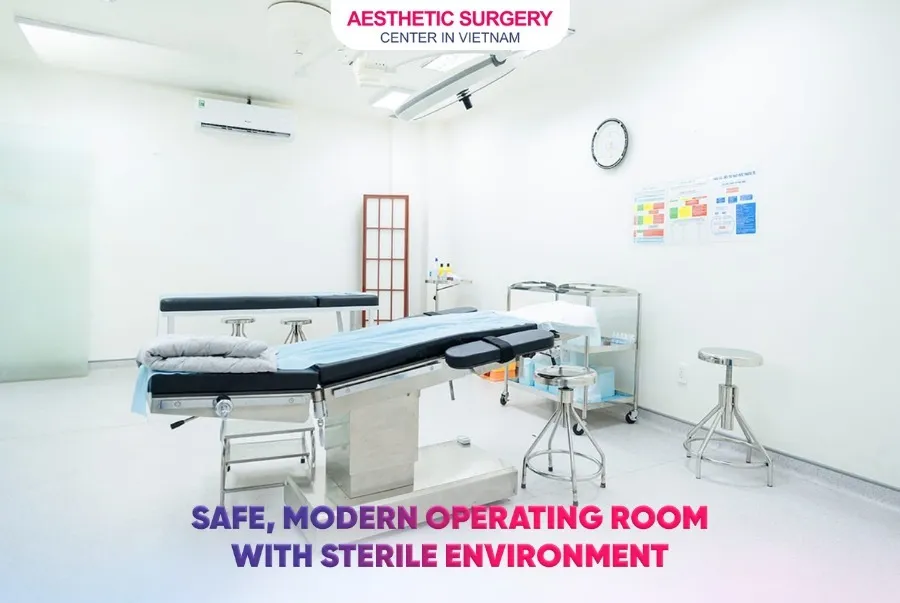
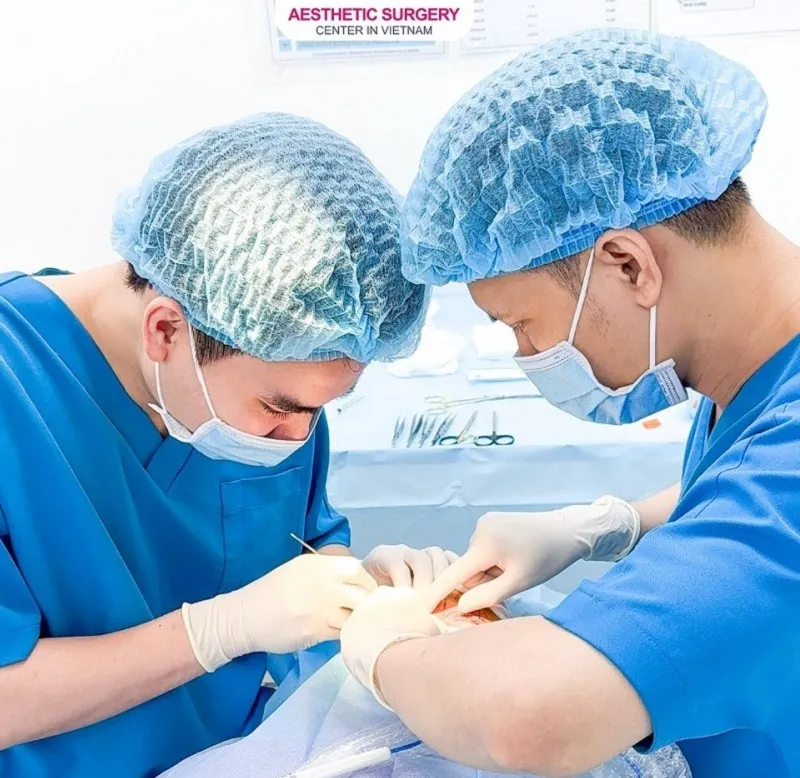
Rhinoplasty and chin augmentation before and after
To visualize the results of simultaneous rhinoplasty and chin augmentation, you can take a close look at the before-and-after images of these procedures below:
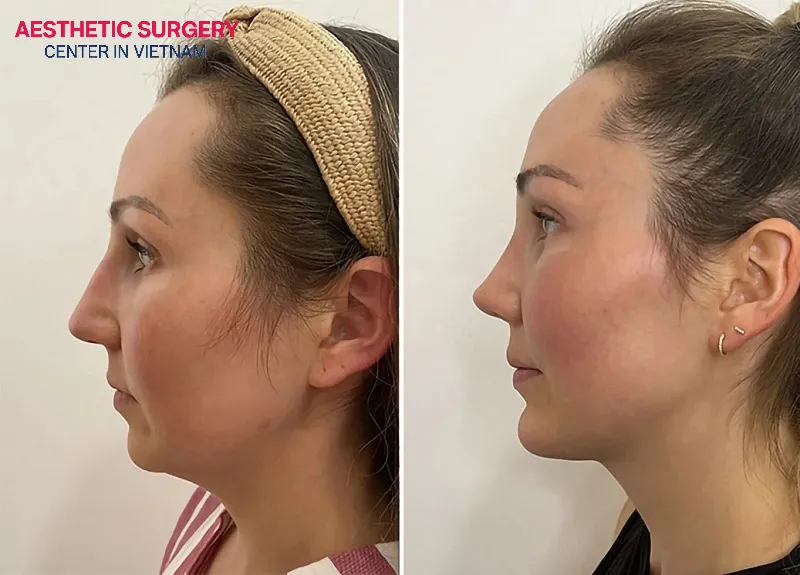
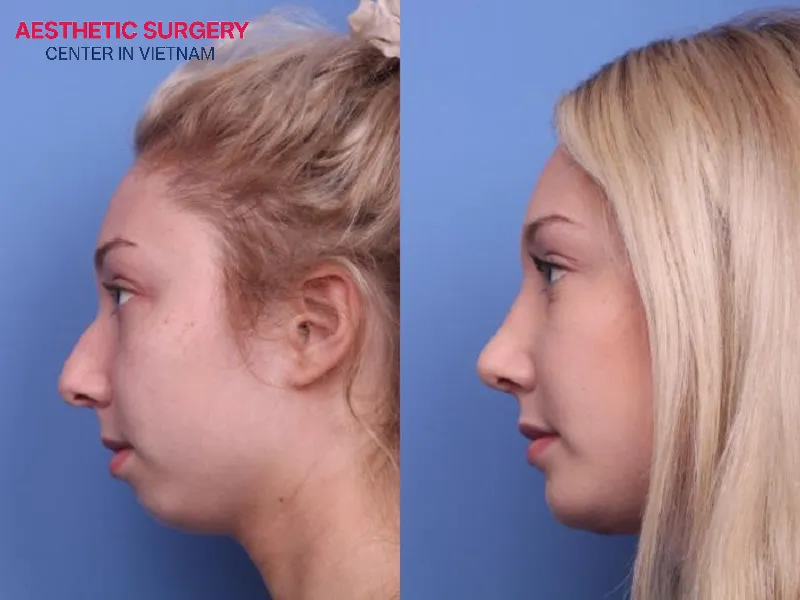

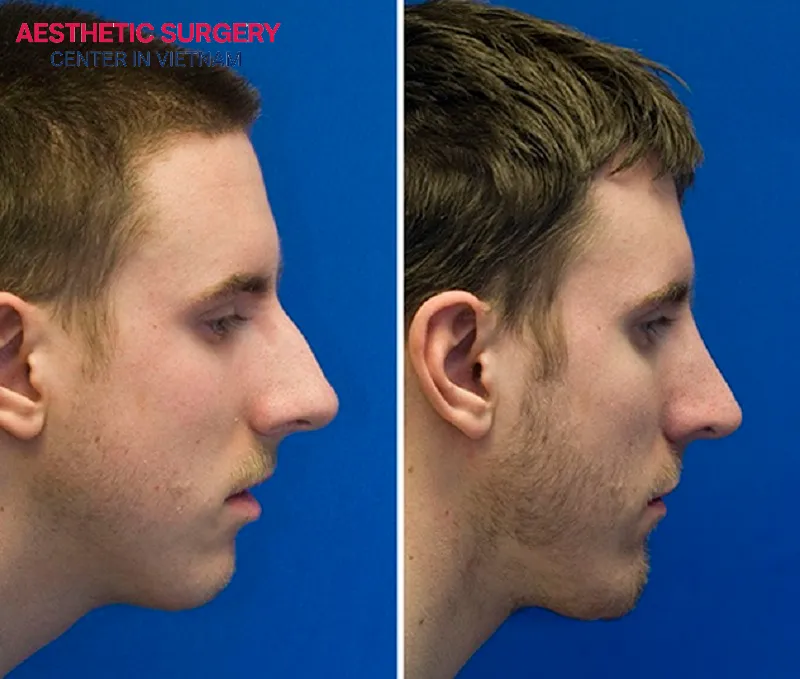
From the information shared about combined chin augmentation and rhinoplasty, it’s clear that imperfections in both the nose and chin can be corrected simultaneously. However, to ensure safety and achieve optimal results, it’s essential to choose a reputable cosmetic clinic in Vietnam with a team of skilled and experienced surgeons. If you’re still unsure where to go, you can confidently choose Aesthetic Surgery Center, where we are committed to providing you with the most satisfying service experience.



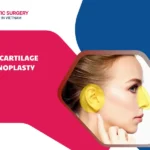
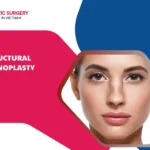







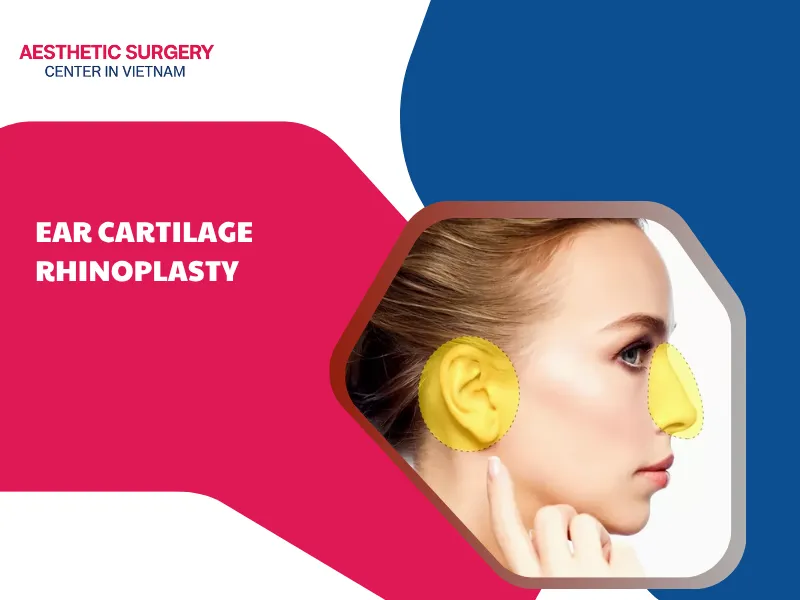







Comment on the post